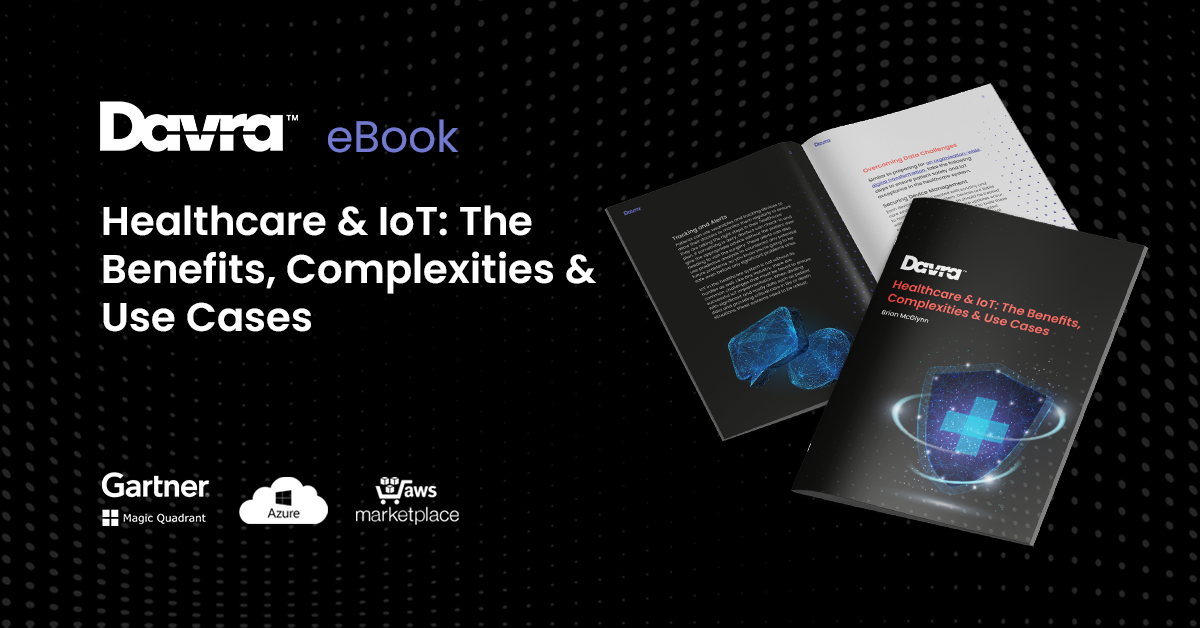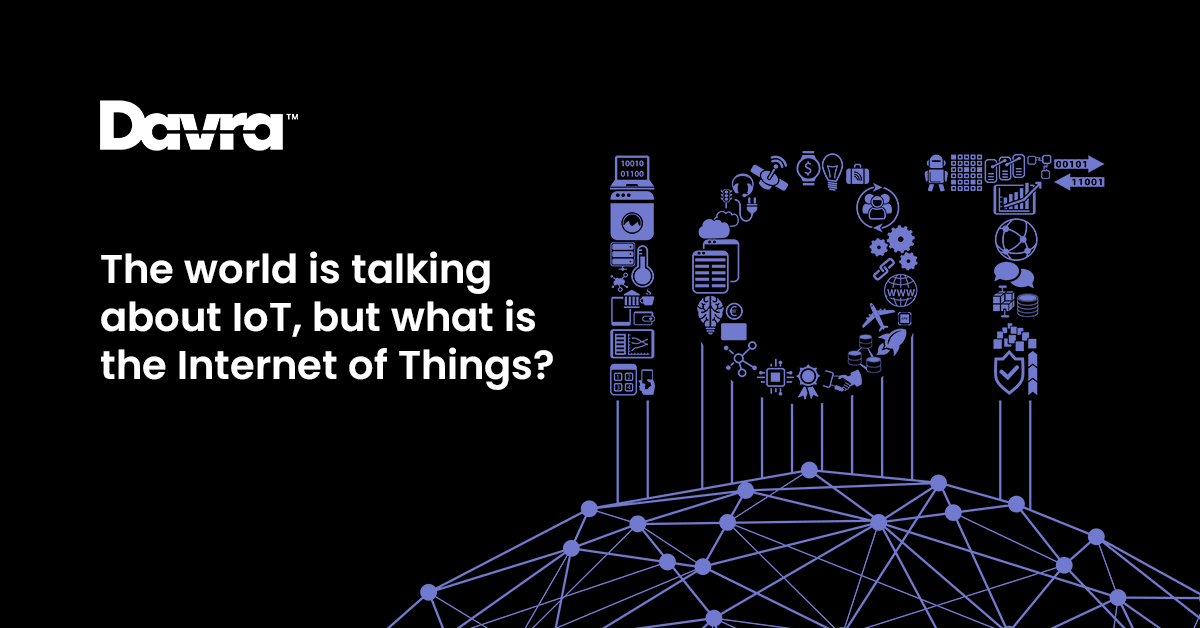IoT in Healthcare Use Cases eBook
Download Your Free IoT in Healthcare Use Cases eBook
Read More


The world is talking about the Internet of Things (IoT), but what is IoT? Unfortunately, the discussion remains shrouded in a mist of uncertainty for many decision-makers. Like other revolutionary technology advancements, IoT generates a considerable amount of well-deserved buzz, making it tough to get straight facts.
Cut through the cloud of hype and learn how the Internet of Things can enhance your business activities. Let these fundamentals impart you with the understanding you need to stay informed and put your knowledge to practical use.
Just as you can go online using the regular internet or check up on your business via its internal intranet, the Internet of Things is a network made up of computing hardware that shares, organizes and stores information. The big difference is that unlike the servers that are feeding you this page or the computers that control your enterprise systems, the networked devices in the Internet of Things encompass a far broader range of hardware, including gateways, sensors, and proprietary business devices.
Anyone with the requisite expertise can set up an IoT implementation that they control. While many of these networks connect to cloud-storage platforms that render them conveniently accessible from anywhere, the Internet of Things remains under the ownership of the user — whether that’s a multinational corporation, small business or municipal service provider.
The Internet of Things can include everything from a manufacturing control system that runs an assembly line to the environmental sensors that keep perishable stock at precisely the right conditions inside freight depots. While servers, network switches, and other traditional computing devices play vital roles in the modern internet of things, such as routing traffic, balancing usage and conducting service quality monitoring, they’re not the main event. The real action lies with the hardware that generates, analyzes and stores the data.
One of the most intriguing features of the IoT is that nearly anything can become a connected device. If your widget factory has an existing backup generator, for instance, you can upgrade it by adding vibration sensors, infrared heat monitoring cameras or other data-collecting components for improved reliability oversight. As long as your upgraded hardware can send data over an Ethernet, Wi-Fi or similar link, then it can become a new source of vital business intelligence.
This concept also works well with control systems. Your plant’s widget-making robot might benefit from having a safety cutoff that a supervisor can engage from a remote location or a speed regulator that slows down production when it senses that your stock of raw materials is running low. Thanks to the Internet of Things, the computing and decision-making hardware no longer has to be collocated with the systems it controls, making it far simpler to centralize your workflows.
The Internet of Thing’s most noteworthy strengths revolves around its adaptability. Since you can sense or measure practically any physical quantity or performance factor, there are very few limits to what you can accomplish. A farmer who wants to learn which of her fields soak up the most water can just as easily set up an IoT irrigation system as a stadium owner might implement a closed-circuit surveillance framework to manage parking availability on game days.
Many of the processes that enterprises depend on are somewhat of black boxes. For example, you might know that your printed circuit board assembly line works by taking in raw materials and spitting out functional electronic devices. Still, it isn’t always clear how you get from A to Z or how to improve the journey. This sort of obfuscation could become even more problematic if you work with third-party devices, such as leased manufacturing equipment.
Plug-and-play Internet of Things frameworks makes it a lot easier to get a closer look at the gears without throwing the whole drivetrain out of alignment. Most of the sensors you might be interested in, such as cameras that count how many devices emerge from your circuit board soldering oven or timers that clock each assembly stage, are passive — they don’t interfere with how things already work. Although you might have to mount a few devices in choice locations, you can peer into the inner workings of any business process you deem relevant without having to leap major hurdles.
IoT systems leverage well-established internet standards and protocols. Unlike most bespoke business frameworks, however, they play very well with a wide range of tools, such as enterprise resource planning, consumer relationship management, compliance governance and other types of software.
This near-universal connectivity gives you the autonomy to enhance the operational elements of your choosing. Want to identify key performance indicators in a complicated fabrication process? Link your IoT sensors to an AI data aggregator that helps filter out the noise and expose trends. Want to provide highly demanded consumer perks, such as last-mile shipping and detailed order tracking? Build an IoT QR tag system that automatically generates notification emails when your freight team members scan parcels. Whether you’re well on the way to deploying a novel business model or just forming the idea, the Internet of Things makes it simpler to get the parts moving in harmony.
Today, billions of devices are connected to the ever-expanding Internet of Things. Many of these components are nothing more than once-traditional business hardware that’s taken on enhanced value with the addition of data sharing capabilities.
How does connectivity improve the viability of an organizational asset? Lifecycle oversight has innumerable bottom-line benefits. For instance, the delivery company that distributes your wares to local retailers probably has a fleet IoT system that lets it track each of its vehicles. Such a network might accomplish everything from finding traffic-free routes to anticipating breakdowns and automating maintenance scheduling practices. By linking raw device data to decision-making systems, leaders expand their view of complex business models and get better acquainted with the lifecycle events underlying everyday expenditures.
The Internet of Things isn’t just some theoretical concept. With roots dating back to the late 90s and thousands of businesses, governments and other entities on board, it’s proven its worth in a variety of domains:
1. Heavy-equipment manufacturers add sensors to their vehicles to make maintenance and fuel oversight less of a hassle for operators.
2. Outpatient care systems allow medical professionals to monitor respiration, heart rate, ECG, body temperature and other parameters while their patients are far away from the hospital or clinic.
3. Smart cities use connected devices to route self-driving transit vehicles, monitor access to car shares and track the use of emission-reducing solar charging stations.
These examples don’t even touch on the millions of personal-use consumer devices connected to some form of IoT. For instance, today’s homes are full of remote-controlled lightbulbs, linked security appliances, and weather stations. While such applications may not seem relevant to enterprises, your opinion might shift once you consider their marketing potential, such as when Diageo built brand recognition by selling personalized, QR-code bearing whiskey bottles that parents could scan to see Father’s day messages from their kids. Consumer-grade hardware can also facilitate innovative employment benefits, such as using Fitbits or other personal trackers to implement company wellness programs and raise morale.
This quick Internet of Things primer has necessarily been kept simple. After all, most people don’t have the time to dive into the technical nuances of unified business networking. The difficulty is that without such an understanding, it becomes almost impossible to implement a safe, reliable IoT framework. About 75 percent of promising projects fail for lack of expertise, inability to follow through or a fundamental misunderstanding of the scope involved.
From anticipating security vulnerabilities and sanitizing massive volumes of data to maintaining minimum levels of acceptable performance, running your own network isn’t easy. It demands experience, and it’s best tackled by those outfitted with a proven track record.
The Davra team does the hard work behind the scenes so that you can get your hands on the data that carries the most weight. We’ve made it easy to get engaged with crucial performance indicators using advanced analytics, incisive visualizations, machine learning and everything else you need to become a modern connected enterprise in just five to seven weeks. Talk to us about building a fully operational IoT solution around an enterprise-tested, comprehensive ecosystem today.
Brian McGlynn, Davra, COO
Download Your Free IoT in Healthcare Use Cases eBook

Davra IoT is the only Industrial IoT Platform Available on AWS Marketplace
Read MoreThe Collaboration of Humans & Robots Has Created The Cobot
Read More